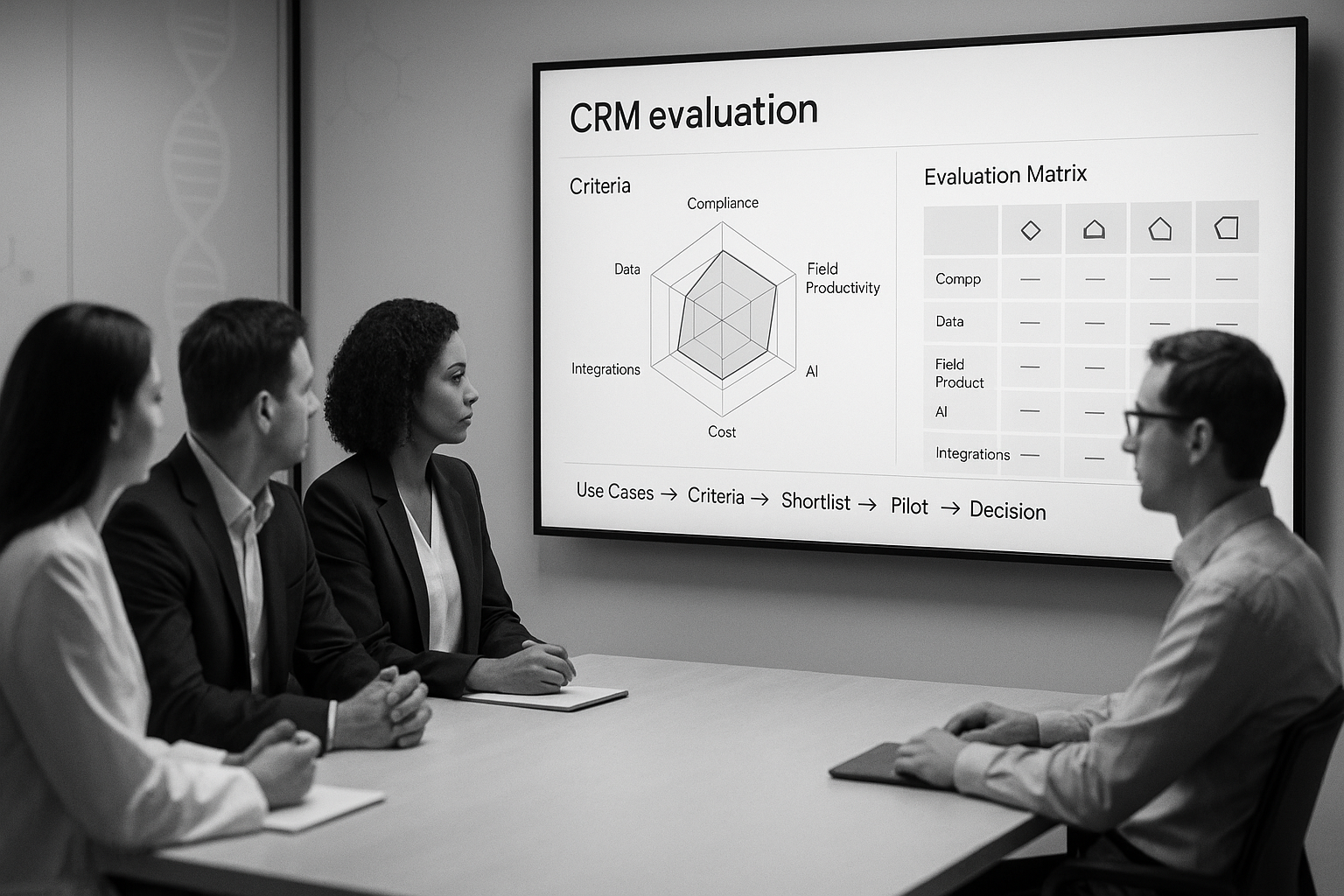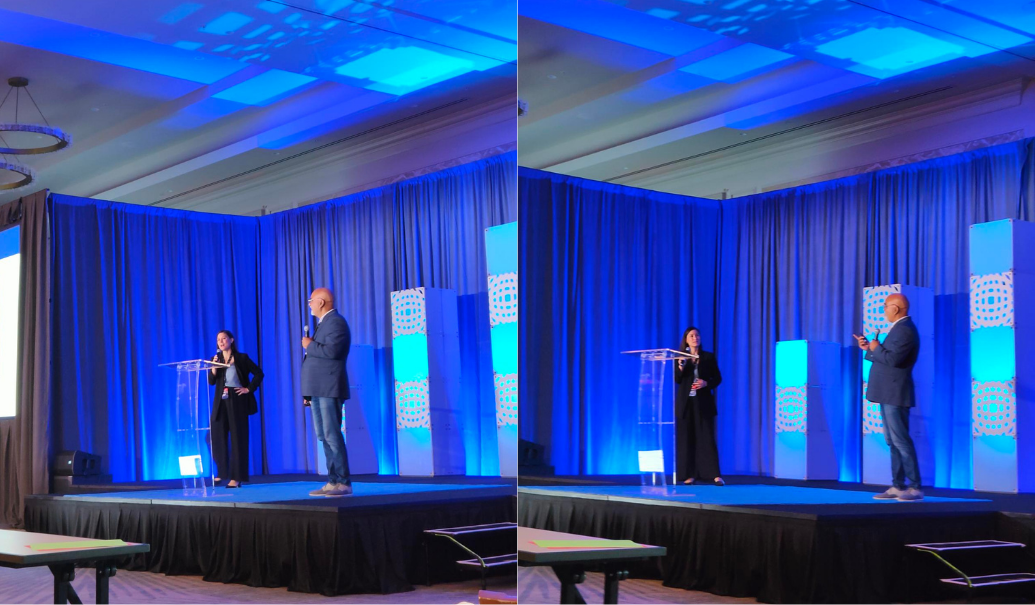Key Takeaways
- Modern CRMs are built for compliance and usability, not just features. They must enforce regulations like GDPR and the Sunshine Act by design.
- Functionality must be mobile-first and work offline to support field teams who operate in environments with unreliable connectivity.
- Look for deep, bidirectional integrations with your ERP and data management systems, not just surface-level connections that require manual work.
- AI is most effective for saving time (e.g., call summaries), but often fails at nuanced tasks like sentiment analysis in scientific discussions.
In today’s high-stakes pharma and medtech environment, a CRM for life sciences isn’t just a backend tool. It’s the operational nerve center for field reps, MSLs, marketing teams who need to move fast, stay compliant, and adapt to digital HCP behaviors. According to recent market analysis, over 80% of CRM failures in the life sciences happen not due to missing features, but because the system can’t handle the unique complexities of the industry, like multi-layered account hierarchies and consent tracking.
This guide covers the top CRM features for pharma that actually solve challenges for biotech CRM, med-tech, and medical-device CRM users in 2025. Let’s break down the essential life-sciences CRM features that separate generic systems from purpose-built platforms.
1. Built-In Compliance for Regulatory Readiness
Life sciences companies operate under region-specific regulations- GDPR, HIPAA, 21 CFR Part 11, Sunshine Act, CNIL, PMDA. A CRM must enforce compliance not through user discipline, but through design.
Your system should support:
- Comprehensive Audit Logs: Capture every user action, data modification, and access event with immutable timestamps to ensure a defensible audit trail.
- Version-Controlled Content: Ensure reps can only access and share MLR-approved materials, preventing the use of expired or off-label content.
- Granular Field-Level Permissions: Restrict access to sensitive data and actions based on user roles, protecting patient information and strategic insights.
- Integrated Consent Frameworks: Tie consent capture directly to HCP profiles and communication channels, automatically enforcing opt-in preferences.
Most companies uncover compliance risks during internal audits when it’s too late. A compliant life sciences CRM makes non-compliance structurally difficult.
2. Territory Management Tools for Strategic Alignment
In a typical CRM, territory planning is geographic. In life sciences, it must reflect therapeutic strategy. Your platform needs to go deeper.
- Challenge: Flat Account Lists. Standard CRMs struggle with complex healthcare networks. A purpose-built system should manage multi-layered hierarchies, linking Individual Delivery Networks (IDNs) to hospitals, clinics, and individual HCPs.
- Challenge: Static Territory Assignment. Life sciences strategy is therapeutic, not geographic. Your platform must allow for dynamic assignments based on product lines, medical specialty, and sales channels without requiring IT intervention.
- Challenge: Siloed Account Ownership. A single account may be covered by sales, medical, and market access teams. The CRM must support shared ownership with role-based visibility to coordinate activity without creating compliance firewalls.
3. KOL Management Capabilities for Strategic Influence
Before you even build a KOL engagement strategy, your biotech CRM needs to recognize how fundamentally different KOL relationships are. These aren’t typical sales contacts. They require deeper tracking and strategic engagement because they influence prescribing patterns, guideline development, and clinical trial perception.
A purpose-built system should track:
- KOL Affiliations and Roles: Document advisory board positions, speaking engagements, and conference participation to get a full picture of their influence.
- Cross-Functional Engagement History: Consolidate a full history of interactions across medical affairs, events, and commercial teams to prevent duplicate outreach.
- Scientific Voice and Publications: Log publication history and key topics of interest to tailor conversations and provide relevant data.
4. Mobile CRM Functionality for Life Sciences Field Teams
Most CRMs break in the field not because the software is flawed, but because it assumes a stable, desktop-first experience. That’s unrealistic for life sciences.
- Offline functionality: Hospital basements, rural clinics, and international sites often lack connectivity. Your CRM must function regardless.
- Quick entry options: Reps should be able to log a visit or sample in under 2 minutes. If not, they'll skip it.
- Voice-to-text or smart summaries: Manual note-taking is slow. Speech capture accelerates usage post-meeting.
- Geo-tagging and routing tools: Integrated maps, directions, and HCP proximity save time daily.
- Mobile-native app, not a mobile-optimized site: Performance, especially on iOS or Android, impacts adoption rates.
Mobile-first workflows are among the top CRM features for pharma, especially for reps working across geographies with limited connectivity.
5. Multichannel HCP Engagement Features for Unified Communication Tracking
Without consolidated engagement tracking, reps fly blind. Product emails, webinars, rep calls, content downloads they all need to land in one place. Your platform should consolidate:
- All Channel Activity: Aggregate email opens, webinar attendance, portal logins, and in-person visits into a single chronological timeline for each HCP.
- Clear Opt-In and Consent History: Display an HCP’s communication preferences and consent status prominently to prevent compliance breaches.
- Content Engagement Metrics: Link specific content downloads or views back to individual reps and marketing campaigns to measure what’s truly effective.
6. Closed-Loop Marketing Features for Content Performance and Engagement Analytics
You can invest heavily in compliant, pre-approved content but if your life sciences CRM doesn’t close the loop, you’re operating blind. In pharma, content isn’t just a sales tool, it’s a regulatory asset. And every time a rep shares something, the system should track what was shared, to whom, and what happened next.
Here’s what closed-loop marketing should look like in a modern life sciences CRM:
|
Capability |
Why It Matters |
|
Pre-Approved Asset Libraries |
Keeps MLR in control. Ensures reps don’t use expired or off-label content. |
|
Content Usage Metrics |
Tracks who’s using what- by rep, region, HCP type, and product line. |
|
Engagement Signals |
View time, open rates, clicks, and follow-up actions tell you what’s actually working. |
|
Cross-Functional Visibility |
Medical, sales, and marketing all see the same data trail. No blind spots. |
|
Campaign-Level Rollups |
Aggregates insight at scale, not just anecdotes from high-performing reps. |
Closed-loop marketing isn’t just about metrics, it’s about building a learning system. Without it your best content strategy is just simply guesswork.
7. Sample and Consent Tracking
Sample distribution is one of the most heavily regulated activities in pharma and medtech and also one of the easiest to mishandle. Your CRM for medtech must ensure that reps aren’t making decisions based on memory, guesswork, or disjointed paperwork.
- Layer 1: Eligibility
Reps shouldn’t guess if an HCP can receive a sample. Rules must be coded into the CRM by geography, specialty, product, and recent activity. - Layer 2: Consent & Signature Capture
Whether e-signature in-person or via link post-call, the CRM should log time, date, and method. This builds defensibility during audits. - Layer 3: Inventory Integration
Sample stock should update in real-time. If a rep can’t see availability or over-distributes, reconciliation becomes a manual task.
Poor sample tracking isn’t just inefficient, it can violate federal and regional law.
8. Medical Inquiry Handling: Integrated, Not Add-On
If a rep gets a product question they can’t answer or hears a side effect, they need a structured, fast path forward. Your CRM should offer:
- Dedicated inquiry forms tied to HCP profiles
- Trigger-based routing to medical affairs or PV teams
- Real-time notification alerts to assigned reviewers
- Response time tracking for compliance oversight
- Case closure logs with status and reviewer notes
In many setups, these tasks are handled over email or spreadsheets. That creates risk not just of delay, but of missing a reportable event.
9. AI and Automation: Only Where It Helps
AI is everywhere in CRM pitch decks. But in pharma, medtech, or biotech, only a few use cases actually hold up under regulatory, clinical, and workflow pressure.
|
Works Well |
Fails Often |
|
NLP-based call summaries to reduce rep admin load |
Predictive lead scoring trained on thin or outdated HCP data |
|
Follow-up suggestions based on clear, trackable engagement history |
Sentiment analysis in scientific discussions often tone-deaf |
|
Email and webinar scoring to prioritize active HCPs |
“Next-best action” tools with no field validation or override option |
If an AI feature doesn’t save time or sharpen targeting, it’s not helping. And if your teams can’t see how it arrived at a recommendation or can’t override it when needed it introduces more risk than value.
Especially in a CRM for medtech or biotech CRM, where field interactions are often complex and sensitive, AI needs to stay in a support role. No shortcuts, no black boxes.
10. Deep CRM Integrations for a Single Source of Truth
CRMs don’t operate in isolation. For medical device CRM systems, integration with databases, product tracking, and adverse event reporting tools is equally critical.
What to ask your vendor:
- Does it integrate bidirectionally with your ERP and MDM systems?
- Can field rep actions update inventory and activity logs in real time?
- Are APIs open, documented, and controllable internally (not just via professional services)?
- Can it handle consent and preference syncing from campaign tools and event platforms?
- Will it support segmented access between medical, marketing, and commercial?
If integrations require constant vendor support or data exports, your CRM isn’t a system of record, it’s a bottleneck.
How Customer-First CRMs Actually Work in the Field
There’s a real difference between a CRM that supports your teams and one that just logs their activity. The shift? Moving from workflow-first to customer-barrier-first design.
Let’s compare how it plays out in reality:
|
Traditional CRM |
Customer-First CRM |
|
Built around internal roles and workflows (sales, MSLs, market access) |
Built around actual barriers faced by each HCP or account |
|
Takes months to update a field or workflow |
Updates are tied to customer-facing plays and outcomes |
|
Teams struggle to implement changes |
Field teams deploy targeted “plays” to overcome specific issues |
|
Minimal impact on HCP friction |
Clear visibility into what’s working and what’s not |
|
Stagnates without clear ownership |
Evolves continuously with frontline feedback |
The point isn’t to throw out structure, it's to design life science CRM features that reduce friction for the people who matter most: your HCPs, accounts, and medical audiences.
Frequently Asked Questions (FAQ)
- Q: Why can’t we just use a general-purpose CRM for life sciences?
- A: While you can customize a general CRM, they often lack the built-in compliance guardrails, complex territory alignment, and specific workflows (like sample tracking) required by pharma, leading to higher long-term costs and compliance risks.
- Q: What is the single most important feature in a life sciences CRM?
- A: While it varies by role, built-in compliance is non-negotiable. A system that can’t enforce regulations like the Sunshine Act and GDPR by design exposes the organization to significant legal and financial risk.
- Q: How does a CRM for medtech differ from a pharma CRM?
- A: CRM for Med Tech often requires more complex inventory and consignment tracking for physical devices, as well as specific workflows for tracking usage in surgical or clinical settings, which may differ from the sample- and literature-focused needs of pharma.
Final Thoughts
A life sciences CRM has one job: make your teams faster, more compliant, and better informed. If reps still use spreadsheets to track visits, the system isn’t working.
The right platform fits the specific pressures of your organization. Before you commit, pressure test the system against your daily reality. A good CRM becomes invisible: used consistently, trusted across roles, and scalable without disruption. That’s the benchmark for choosing a platform with the right life science crm feature.




